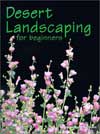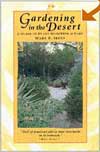Xeriscape Definition
- An environmentally friendly form of landscaping that uses a variety of indigenous and drought tolerant plants, shrubs, and ground cover.
- landscaping that conserves water and protects the environment; utilizes native plant selection, practical turf areas, efficient irrigation, and mulches and appropriate maintenance.
- a type of landscaping around homes and businesses that uses a limited amount of water.
- Landscaping techniques designed to use water efficiently.
- Climate-tuned landscaping that minimizes outdoor water use while maintaining soil integrity and building aesthetics. Typically includes emphasis on native plantings, mulching, and no or limited drip/subsurface irrigation.
- Landscaping with drought resistant plants.
- uses native, drought-tolerant plants to create low-maintenance landscaping.
- Xeriscaping, a word coined by combining xeros (Greek for "dry") with landscaping, is a water-conservative approach to landscaping. Plants whose cultural requirements are appropriate to the local climate are emphasized, and care is taken to avoid wasting water to evaporation and run-off. Xeriscape is a trademark created by the Denver Water Board.
Xeriscape Landscaping
Planning and Design
Group plants of similar water needs together…then experiment to determine how much and how often to water for the site.
A beautiful xeriscape starts with a good design. The physical characteristics of the site should be considered and so should your needs and your aesthetic preferences. For example, here are a few of the considerations:
- Sun: What portions of the property receive hot, afternoon sun? What portions receive morning sun and afternoon shade? The amount and time of sun will affect the types of plants you choose.
- Function: Do you need an outdoor living area? If so, consider expanding the patio area with additional shade structures and low-water-use trees to provide privacy.
- Views: Are there views you want to protect or screen? Know the mature size of the plants you select to ensure the views and screening you desire.
- Time: How much time do you plan to spend maintaining your landscape? If you would rather enjoy your yard than work on it, choose low-maintenance plants.
A well-planned design enables you to convert to water-wise landscaping quickly or to install your xeriscape in phases. Whether you create your own design or call upon a landscape design professional, a properly designed xeriscape can help meet your life-style needs.
Soil Improvement / Soil Amendment
Proper soil preparation is the key to successful water conservation. If the soil is very sandy, water will be lost along with valuable nutrients, due to leaching below the root zone. If your soil is a heavy, clay texture most common in this area, you will lose water through runoff.
A good soil, one that both supports healthy plant life and also conserves moisture, has a balance of rather coarse soil clusters (aggregates), sand and pore spaces. The "ideal" soil will have as much as 50 percent by volume pore space, with the soil itself consisting of a good balance of sand, silt and clay.
A major problem with "heavy" soils is that clay tends to dominate the soil complex. Clay is composed of microscopic crystals arranged in flat plates. When a soil has a high amount of these crystals they act much like a glue, cementing the particles of sand and silt together and resulting in a compact almost airless soil. Such soils usually repel surface water, resulting in runoff. What water does get into these soils is held so tightly by the clay itself that plants cannot use it. Plants in a clay soil, even though it is moist, often wilt from lack of moisture. Plant roots also need air to thrive. In clay soils air spaces are small and may be filled with water, thus plant roots often suffer from oxygen starvation. In very sandy soils, the opposite is true. Sandy soils have very large pore spaces, but because the particles also are large there is little surface area to hold the water, thus a sandy soil tends to lose water rapidly.
A good soil is not made in just one year. Add organic matter to garden areas annually. In areas to be sodded or seeded, add organic amendments as a onetime only procedure. Take advantage of this one time before seeding or sodding by doing a thorough, complete job. This encourages deep roots that tap the water stored in the soil and reduces the need for wasteful, frequent water application.
Create Limited Practical Turf Areas
When considering a landscape's water requirement, it is important to note that turf grasses require more frequent watering and maintenance than most other landscape plants. Carefully select grass according to its intended use, planting location and maintenance requirements.
Achieving a significant reduction in water consumption and landscape maintenance may also involve reducing the size of water-sensitive lawns through the use of patios, decks, shrub beds and groundcovers.
Also, when designing or evaluating turf grass areas in the landscape, consider the ease or difficulty in watering the proposed area. Long narrow areas and small odd-shaped areas are difficult for any irrigation equipment to efficiently water. Try to eliminate long, narrow areas and maintain more blocky, square areas.
Use Appropriate Plants
There is no shortage of beautiful drought tolerant native plants. But many introduced plants from arid or semi-arid regions of the world are also drought tolerant. Most importantly, select the right plant for the right place. Be mindful not only of water requirements but also of the factors of soil conditions, and exposure to light, wind, and temperature extremes (both hot and cold). Bear in mind that even native and drought tolerant plants must have regular irrigation until they are established.
Mulch
Mulch holds moisture in soil, reduces weed growth, slows erosion and beautifies your landscape. Spread several inches of mulch -- such as pine straw, leaves or wood chips, around shrubs, trees and flower beds. Re-mulch as needed. Many communities offer mulch and compost through county or local waste management programs.
Irrigate Efficiently
Don't over-water. Use soaker hoses and drip irrigation to water deeply and encourage deep root growth.
Maintain Your Landscape
Over watering increases the risk of plant disease. To encourage deep rooting and more drought-resistance, water plants thoroughly without over-watering.
Fertilize properly: excessive fertilizer promotes fast, but weak growth and actually increases a plant’s water needs, as does over-pruning.





